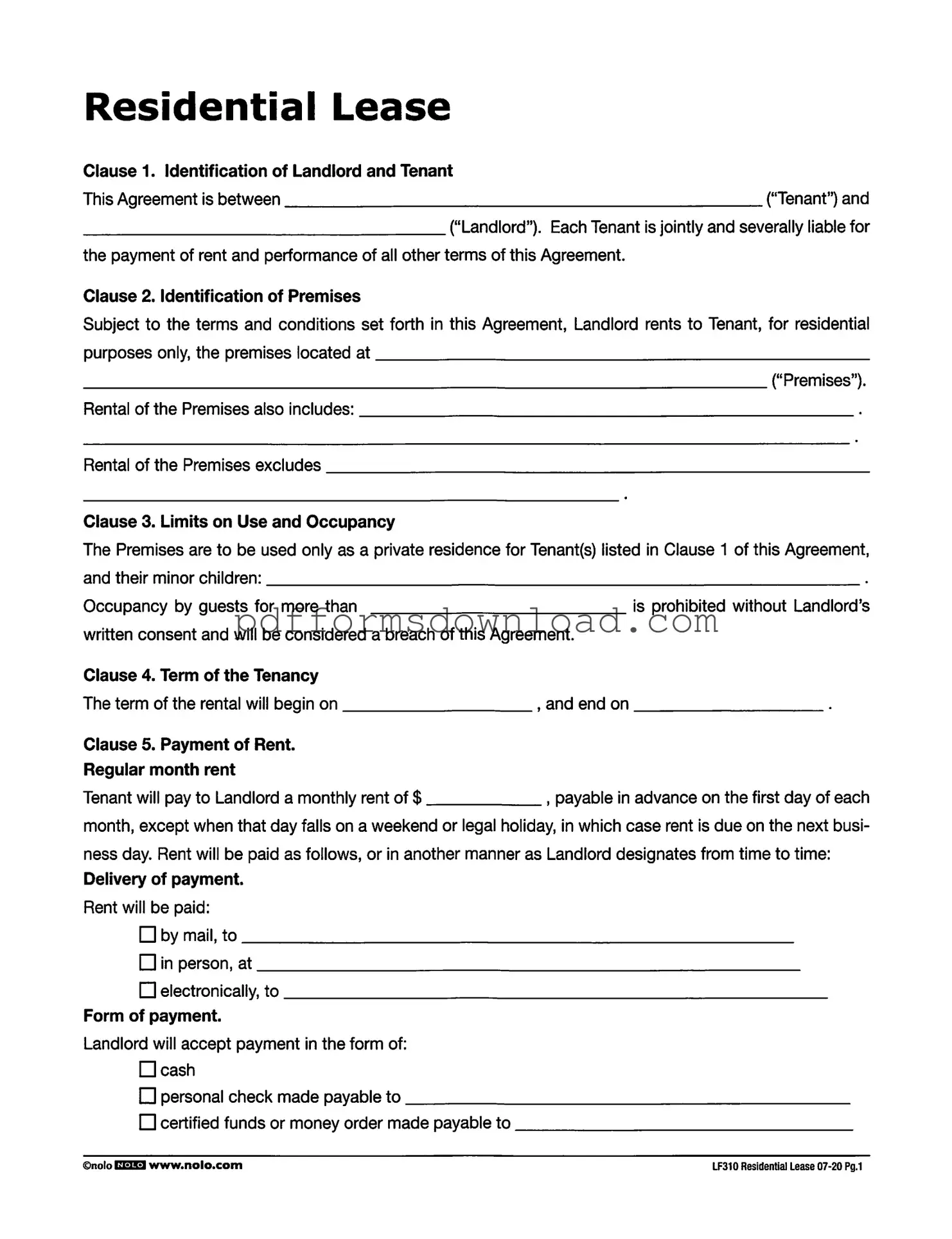What is the Lf310 Residential Lease form?
The Lf310 Residential Lease form is a legal document that outlines the terms and conditions of a residential rental agreement between a landlord and tenant. It specifies the responsibilities of both parties, including rent payment, security deposits, and rules regarding the use of the rental property.
Who is responsible for paying rent?
According to the lease, each tenant listed in the agreement is jointly and severally liable for the payment of rent. This means that all tenants are equally responsible for the full amount of rent, and the landlord can seek payment from any one tenant if others do not pay.
What are the limits on the use of the premises?
The premises may only be used as a private residence for the tenants and their minor children. Any occupancy by guests for more than a specified duration without the landlord’s written consent is considered a breach of the agreement. This ensures that the property is used solely for residential purposes.
How is rent paid?
Rent is due on the first day of each month, payable in advance. If the due date falls on a weekend or legal holiday, rent is due on the next business day. The landlord may designate specific methods for payment, such as by mail, in person, or electronically. Acceptable forms of payment include cash, personal checks, certified funds, money orders, credit or debit cards, and electronic funds transfers.
What happens if rent is paid late?
If rent is not paid in full within a specified number of days after the due date, a late charge will be assessed. This charge consists of a fixed amount plus an additional fee for each day the rent remains unpaid, with a maximum total charge for any one month. The landlord retains the right to insist on full payment by the due date.
What is the security deposit policy?
Upon signing the lease, the tenant must pay a security deposit. This deposit cannot be used to cover the last month’s rent or any other fees without the landlord’s written consent. After the tenant vacates the premises and provides a forwarding address, the landlord will return the deposit or provide an itemized statement explaining any deductions within a specified timeframe.
Can tenants sublet the premises?
Tenants are prohibited from subletting any part of the premises or assigning the lease without the landlord's prior written consent. Violating this clause can lead to termination of the tenancy. This rule helps maintain control over who occupies the rental property and ensures compliance with the lease terms.
